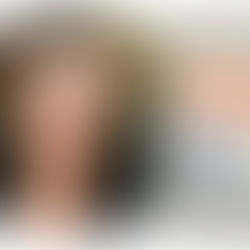A Return Of A Dangerous Circle Of It

Have you ever felt mistrust and an urgent itch to flee from a person who is traditionally considered a funny and amicable type? This is exactly what I feel about the clown from my childhood and now I know why. Stephen King has explained the reason in depth and width in his one of the most scariest novels It.
The novel published in 1986 is ready for one more circle of its popularity, as this autumn the new adaptation of It will hit the big screens. If you haven‘t read the novel or did it long time ago, it‘s time to fill the gap or revisit the plot. Trust me, It is worth it.
Being at his peak of his best horror writer career, Stephen King created a more than thousand pages long anthology describing children‘s attempts to fight the grand evil and their own fears simultaneously. Shaped as a collection of memoirs written by one of the main characters it tells about the town of Derry possessed by an ancient evil, revealing itself to people disguised as a clown Pennywise. Only seven teenagers, so called Losers‘ Club, are capable to resist and fight It back.
The story begins in 1957 when a six-year-old George Denbrough chases his paper boat down the street until it goes down the drain. Attempting to reach the boat George encounters the clown who rips his hand off and kills the boy. And he is not the only child being killed or missing in Derry that year. Whenever the accident happens, the image of the clown or the floating balloons is always present.
George‘s brother Bill can‘t come with the terms of his family loss and soon he and his six friends find out that they are the ones who are destined to fight the monster. They almost succeed to kill It but it‘s not over. Twenty seven years later the monster starts its killing cycle again and the Losers‘ Club must keep their promise to come back to Derry.
The novel has no traditional consistency of storytelling. It jumps back and force between 1958 and 1985 with inclusions dating back even to the 19th century, still not revealing the outcomes of two fights till the very end. The story produces incredibly detailed creative descriptions and explicitly develops all seven main characters plus the secondary though very significant ones. Well, classic King‘s style at its splendor.

However, as there‘s more vicious monster behind the clown, there‘s deeper meaning behind the adventurous plot. It‘s all about our fears. The ones we have as the children and the same ones we still face as the adults. It is the fear that creates monsters, thus to beat them, we have to fight our inner monsters first by invoking long ago lost child‘s imagination and fantasy.
Stephen King suggests that our personalities are programmed in the childhood. Therefore, we are who we are and make the certain choices in our lives. This statement is vividly reflected in seven friends when you have a chance to compare their eleven and then thirty-eight-year old selves. The latter successful but yet desperate. Probably effected by a grim Pennywise‘s verdict that „we all float down here“, which actually bears an eventual down-to-earth truth. This is where the monsters root from – from „down here“ in each and every of us.









































